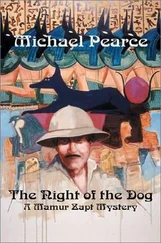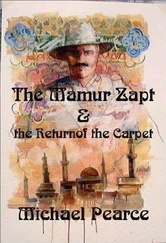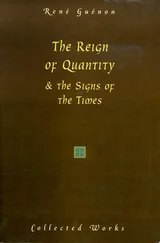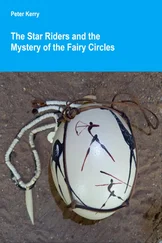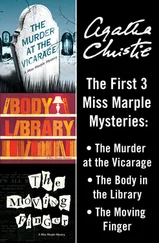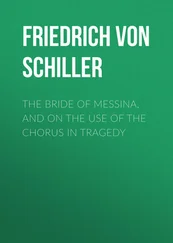1 ...8 9 10 12 13 14 ...17 I asked if this climate of suspicion that had developed around him, especially when he had become unpopular for not hiring Dr Taha, could have led to his being killed by a Palestinian.
‘It could not have been a Palestinian killing,’ he insisted.
I said, ‘Why not?’
His gaze drilled into me. ‘It was too professional. There were two fatal shots, one to the head, one to the heart. What is the word? A double – (he couldn’t find the word)? The Palestinians don’t do it like that. When a Palestinian shoots someone, he just points the gun and goes bang bang bang bang .’
I suggested that a hot-headed young man, perhaps with brothers who had died in jail, who was acting in the rage of despair, might have killed Glock independently as an anti-American gesture.
‘But why would he kill Albert Glock?’ he responded. ‘There are plenty of other blue-eyed people around. And bullets are precious and expensive and hard to get hold of for Palestinians.’
He told me one detail I hadn’t heard before. The gunman was wearing white sneakers, which were the trademark of both the Shin Bet – the General Security Services, roughly the Israeli equivalent of the FBI – and the shabab , the young fighters of the intifada . You sometimes can’t tell the two sides apart.
Khreisheh apologized for the report. He couldn’t do a decent job, he explained, because the Israelis wouldn’t give him the autopsy. No Israeli authorities would talk to them, presumably because they represented the PLO. Besides that, Maya fell to pieces during the interview. Mrs Glock had left the country, or so he thought. (She hadn’t.) They interviewed about twelve people. There was not much they could say, because ‘there were no clues’. He just assumed with a shrug that it was some kind of Israeli undercover operation.
‘Look to the archaeology,’ he kept saying: that was where the answer lay. That meant that the Israelis did it, or ordered it done, because of the danger his work posed to a state so dependent on archaeology to demonstrate its roots in the land. It is a thought that persists among Palestinians now, even if you point out that Glock was here on a tourist visa, which he had to renew every three months. If the Israelis didn’t want him in the country, all they would have to do is not renew his visa. They wouldn’t have to give a reason. They didn’t need to shoot him.
This Palestinian view of the political potency of Glock’s archaeological work was darkly reflected in a rumour that began to circulate soon after the murder. The rumour was that Albert Glock was working on an archaeological excavation near Nablus, and that he had discovered something big and important, which would somehow undermine the whole Israeli historic claim to Jerusalem. So ‘they’ killed him to prevent him from revealing his discovery. The story is garbled: Glock never excavated near Nablus. But it showed that, in death, Albert Glock’s life had attained the power of myth. It reflected the Palestinian conviction, which people around Bir Zeit still hold, that there was an Israeli hand in Glock’s murder. And it showed that in Israel/Palestine, archaeology is at the heart of the conflict between the two peoples.
Khreisheh’s report told another myth about Glock: that his death was a sort of personal implosion, that he was killed because of the architecture of his own character. It is a myth of tragic fatalism. Albert Glock was a difficult man, this myth says. He didn’t fit into society, he wanted to do things his own way, and that is impossible in Palestine, and it was therefore his destiny to die catastrophically.
As we left the café, he repeated the point he had been emphasizing throughout our conversation, and which to him was the key to the whole thing.
‘Remember,’ he said. ‘Look at the archaeology.’
TO UNDERSTAND FULLY what Nabhan Khreisheh meant in his cryptic remark about the significance of archaeology in this murder; to understand how Albert Glock, an American archaeologist, came to be assassinated in a driveway in the West Bank, one has to go back a long way, to the very beginning of archaeology in Palestine.
In about the year 325 of the common era, shortly after he acquired the eastern provinces that included Palestine, the Emperor Constantine – the first Christian emperor and the founder of Byzantine civilization – sent his mother, Flavia Julia Helena Augusta, the Empress Dowager, at the head of a mission to Palestine. Its immediate political purpose was to assert Constantine’s authority in the province, and implement his policy of promoting Christians and Christianity in the imperial state among a mostly non-Christian population. As physical signs of this new dispensation, a number of churches and basilicas were commissioned, including a church over the Holy Sepulchre, the presumed tomb of Christ. A local cult of the relic of the cross on which Christ was crucified had already come into existence at some point in the intervening three centuries, though how and when remains obscure. Albert Glock worshipped at a church a stone’s throw from this place on the morning of the day he was murdered.
The Empress Helena died in about 328, in her eighties. Some fifty years after her death, a legend began to circulate about her and her visit to Palestine. It appears in the Ecclesiastical History of Tyrannius Rufinus, written towards the end of the fourth century:
Helena, the mother of Constantine, a woman of outstanding faith and deep piety, and also of exceptional munificence … was advised by divinely-sent visions to go to Jerusalem. There she was to make an enquiry among the inhabitants to find out the place where the sacred body of Christ had hung on the Cross. This spot was difficult to find, because the persecutors of old had set up a statue of Venus over it, so that if any Christian wanted to worship Christ in that place, he seemed to be worshipping Venus. For this reason, the place was not much frequented and had all but been forgotten. But when … the pious lady hastened to the spot pointed out to her by a heavenly sign, she tore down all that was profane and polluted there. Deep beneath the rubble she found three Crosses lying in disorder. But the joy of finding this treasure was marred by the difficulty of distinguishing to whom each Cross belonged. The board was there, it is true, on which Pilate had placed an inscription written in Greek, Latin and Hebrew characters.
Helena was unsure that what she had found was the True Cross. To allay her doubts, the bishop of Jerusalem, Macarius, determined that divine proof was needed. He led Helena and her entourage to the house of a woman who was mortally ill with a serious disease. One by one the crosses Helena had found were shown to the sick woman. When the third cross was brought to her, the woman leapt out of bed, cured. This miracle identified the third cross as the True Cross.
When the queen saw that her wish had been answered by such a clear sign, she built a marvellous church of royal magnificence over the place where she had discovered the Cross. The nails which had attached the Lord’s body to the Cross, she sent to her son. From some of these he had a horse’s bridle made, for use in battle, while he used others to add strength to a helmet, equally with a view to using it in battle. Part of the redeeming wood she sent to her son, but she also left part of it there preserved in silver chests. This part is commemorated by regular veneration to this very day.
This legend has been woven into later historical narratives as if it were fact, but it is a pious fiction, emanating from the imperially supported church in Jerusalem. (In his account of the life of Constantine, written in about 338, about the time of her death, the Bishop Eusebius, chronicler of the early church in Palestine, mentions Helena’s piety and her commissioning of churches, but says nothing about finding the Cross.) The purpose of the legend is to burnish Constantine’s reputation as a Christian emperor. Note the symbolism in what happened to the nails: incorporated into the Emperor’s helmet (other versions of the legend say diadem or crown) and his horse’s bridle. The sacred power of Christ is incorporated into Constantine’s imperial implements of war and governance, giving supernatural legitimacy to his military and civil authority.
Читать дальше

